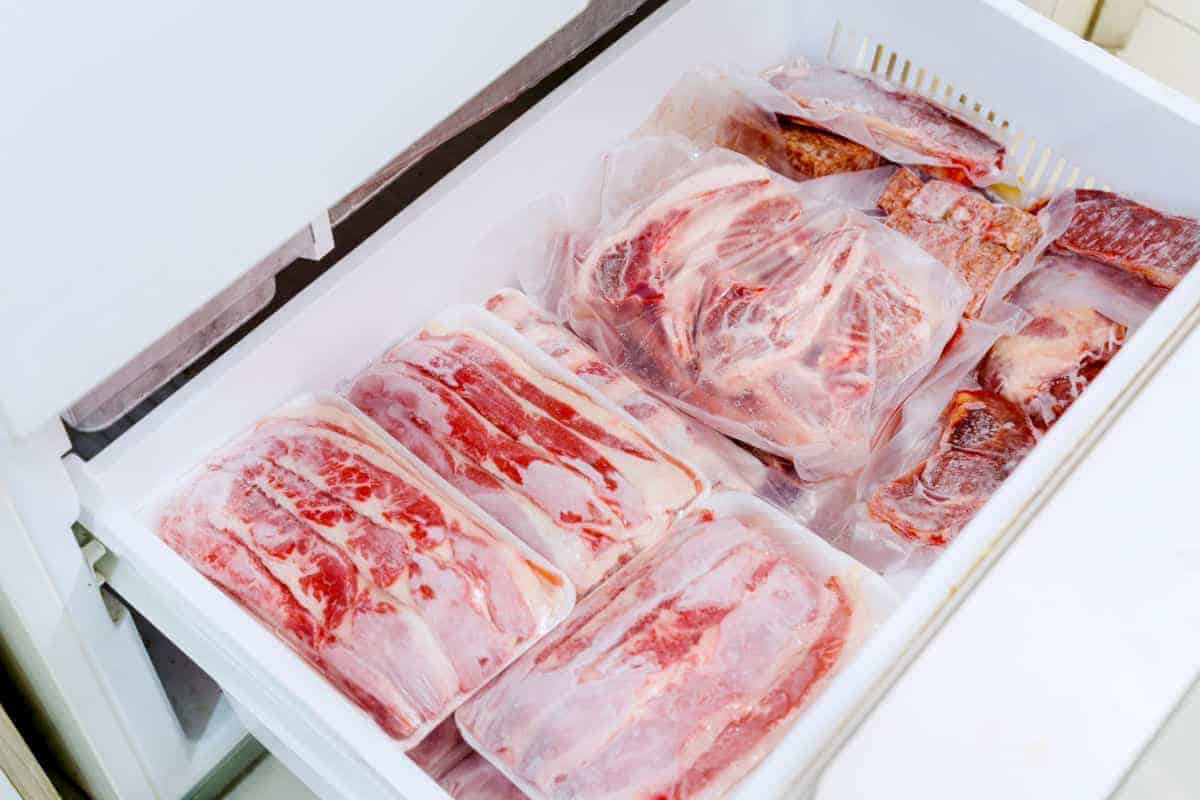

Articles
How To Store Meat In The Freezer
Modified: May 6, 2024
Learn the best techniques for storing meat in the freezer with our informative articles. Keep your food fresh and safe with these useful tips.
(Many of the links in this article redirect to a specific reviewed product. Your purchase of these products through affiliate links helps to generate commission for Storables.com, at no extra cost. Learn more)
Introduction
Storing meat in the freezer is an excellent way to preserve its freshness and extend its shelf life. Whether you purchase meat in bulk, have leftovers from a large meal, or simply want to stock up for future use, proper freezer storage is key to maintaining the quality and taste of the meat. In this article, we will explore the best practices for storing meat in the freezer, from preparing and packaging to optimal storage conditions and safety considerations.
When done correctly, freezing meat can help you save money, reduce food waste, and have a readily available supply of protein-rich options at your fingertips. However, improper freezer storage can lead to freezer burn, loss of flavor, and potential health risks. By following the guidelines outlined in this article, you can ensure that your frozen meat remains safe to eat and maintains its taste and texture.
Key Takeaways:
- Properly preparing, packaging, and labeling meat before freezing is essential to maintain its quality and flavor. Following these steps ensures that your frozen meat remains safe to eat and easily accessible for future use.
- Thawing frozen meat properly is crucial for food safety and delicious results. By following the recommended thawing methods and cooking thoroughly, you can enjoy safe and tasty meals without compromising the quality of the meat.
Read more: How To Store Steak In Freezer
Freezing Fresh Meat
Freezing fresh meat as soon as possible after purchase or butchering is essential to preserve its quality. The freezing process helps to slow down the growth of bacteria, which can cause spoilage. Here are some guidelines to follow when freezing fresh meat:
- Trim excess fat: Before freezing, trim any excess fat from the meat. Fat can become rancid during frozen storage and impact the taste and quality of the meat.
- Divide into portions: Consider dividing larger cuts of meat into smaller portions that you are likely to use in a single meal. This will make it easier to thaw only the needed amount without having to defrost the entire package.
- Wrap tightly: Wrap the meat tightly in airtight packaging materials, such as plastic wrap or freezer bags, to prevent air exposure and freezer burn. For added protection, consider wrapping the meat in an additional layer of aluminum foil.
- Date and label: Properly label the packaging with the name of the meat and the date of freezing. This will help you keep track of the meats in your freezer and ensure you use them within the recommended time frame.
It’s important to note that the quality of meat may slightly diminish after freezing. While this is normal, adhering to proper freezing techniques can help minimize any changes in texture and flavor. By following these steps, you can ensure that your frozen meat retains its quality and taste when it’s time to use it.
Preparing Meat for Freezing
Before placing meat in the freezer, it’s essential to properly prepare it to maintain its quality during freezing and thawing. Here are some steps to follow when preparing meat for freezing:
- Remove bones: If your meat includes bones, consider removing them before freezing. This not only saves space in the freezer but also prevents the bones from affecting the texture of the meat during thawing.
- Marinate or season: If you plan to use the meat for a specific recipe, it can be beneficial to marinate or season it before freezing. This allows the flavors to infuse and enhances the taste when it comes time to cook.
- Cool to room temperature: Before freezing, allow the cooked meat to cool to room temperature. This helps prevent condensation from forming inside the packaging, which can lead to freezer burn.
- Vacuum sealing: Consider using a vacuum sealer to remove excess air and create a tight seal around the meat. Vacuum sealing can significantly extend the shelf life of frozen meat and prevent freezer burn.
- Use freezer-safe containers: If you prefer using containers instead of plastic wrap or freezer bags, ensure they are specifically designed for freezer use. These containers are typically made from materials that withstand low temperatures without cracking or breaking.
Properly preparing the meat before freezing not only helps maintain its quality but also makes it easier to portion and use when it’s time to cook. By taking these steps, you can ensure that your frozen meat maintains its flavor and texture, allowing you to enjoy delicious meals even after it has been frozen.
Packaging and Labeling Meat
Once you have prepared the meat for freezing, it’s important to package it properly to maintain its quality and protect it from freezer burn. Here are some guidelines for packaging and labeling meat:
- Use freezer-safe materials: When selecting packaging materials, opt for those specifically designed for freezer use. Freezer bags, plastic wrap, aluminum foil, and freezer-safe containers are all suitable options.
- Avoid air exposure: Properly wrap the meat, ensuring there is minimal air exposure. Excess air can lead to freezer burn, which can negatively impact the quality and taste of the meat.
- Wrap tightly: Whether you choose to use plastic wrap or freezer bags, make sure to wrap the meat tightly to prevent air from entering. This will help maintain the integrity of the meat during freezing and storage.
- Label the packaging: Ensure that each package is clearly labeled with the type of meat, as well as the date of freezing. This will help you easily identify the contents and keep track of the recommended storage times.
- Portion appropriately: Consider dividing larger cuts of meat into smaller, meal-sized portions. This allows for easier thawing and helps minimize waste, as you can defrost only what you need.
Proper packaging and labeling play a critical role in maintaining the quality and safety of the meat during freezing. By following these guidelines, you can ensure that your frozen meat remains in optimal condition and easily accessible for future use.
When storing meat in the freezer, make sure to wrap it tightly in plastic wrap or aluminum foil to prevent freezer burn. Place it in an airtight container or freezer bag to further protect it from freezer burn and odors.
Optimal Freezer Storage Practices
Correct freezer storage practices are crucial to maintaining the quality and safety of your frozen meat. Here are some guidelines to follow for optimal freezer storage:
- Temperature control: Set your freezer temperature to 0°F (-18°C) or below. This helps keep the meat frozen at a safe temperature, preventing bacterial growth and maintaining its texture and taste.
- Proper placement: Arrange the meat packages in a way that allows for efficient airflow. Avoid overcrowding the freezer, as this can restrict the circulation of cold air, leading to uneven freezing and potential freezer burn.
- First in, first out (FIFO): Practice the FIFO method by placing the newly frozen meat in the back of the freezer and using the older packages first. This ensures that you rotate your stock and consume the meat within the recommended storage times.
- Organize and stack: Keep your freezer well-organized by categorizing different types of meat and stacking similar packages on top of one another. This makes it easier to locate specific items and helps maximize the use of space.
- Avoid temperature fluctuations: Try to minimize the frequency of freezer door openings to prevent temperature fluctuations. Fluctuations in temperature can impact the quality of the meat and increase the risk of freezer burn.
Following these optimal freezer storage practices will help prolong the shelf life of your frozen meat and ensure that it maintains its flavor and texture for an extended period. By taking these simple steps, you can have a well-organized freezer that provides convenient access to a variety of meats for your cooking needs.
Read more: How To Store Fish In Freezer
Thawing and Using Frozen Meat
Thawing frozen meat properly is crucial to ensure safe and tasty results. Here are some guidelines for thawing and using frozen meat:
- Refrigerator thawing: The safest method for thawing meat is to transfer it from the freezer to the refrigerator. Allow enough time for the meat to thaw completely. The exact time will vary depending on the size and thickness of the meat, but as a general guideline, plan for 24 hours of thawing time per 5 pounds (2.3 kg) of meat.
- Cold-water thawing: If you need to thaw meat quickly, you can use the cold-water thawing method. Place the meat in a sealable plastic bag and submerge it in cold water. Change the water every 30 minutes to ensure that it stays cold. It’s important to note that this method may take around 30 minutes per pound (500 g) of meat, so it requires more active supervision.
- Microwave thawing: While microwaving can be a time-saving method, it is important to follow the microwave’s defrosting guidelines carefully. Use the specific defrost setting and stop the process once the meat is thawed but still slightly icy. Be cautious not to cook the meat during the defrosting process, as it can lead to uneven cooking and loss of texture.
- Use thawed meat promptly: Once the meat is thawed, it’s best to use it promptly. Avoid re-freezing previously thawed meat, as it can affect the quality and safety of the meat.
- Cook thoroughly: Always ensure that the thawed meat is cooked thoroughly to the recommended internal temperature to eliminate any harmful bacteria. Using a meat thermometer is recommended to verify the doneness of the meat.
Thawing your frozen meat properly is crucial for food safety. By following these guidelines and allowing enough time for the meat to thaw, you can enjoy safe and delicious meals without compromising the quality of the meat.
Safety Considerations
When handling and storing meat in the freezer, it’s important to keep safety in mind to prevent foodborne illnesses. Here are some safety considerations to follow:
- Proper hygiene: Always practice good hygiene when handling meat. Wash your hands thoroughly with soap and water before and after handling raw meat to prevent cross-contamination.
- Separate storage: Keep raw meats separate from other foods in the freezer to avoid any potential cross-contamination. Use separate storage containers or wrap meats tightly to prevent their juices from coming into contact with other food items.
- Safe thawing: Always thaw meat in the refrigerator, cold water, or the microwave. Avoid leaving meat out at room temperature, as this provides an environment for bacteria to grow.
- Storage time: Be mindful of the recommended storage times for different types of meat. While freezing can significantly extend the shelf life, it’s essential to use the meat within the recommended time frame to maintain its quality and safety.
- Inspect before use: Before cooking or consuming frozen meat, visually inspect it for any signs of freezer burn, discoloration, or unusual odors. If the meat appears questionable, it’s best to discard it to avoid any potential health risks.
It’s crucial to handle and store meat properly to prevent foodborne illnesses. By following these safety considerations, you can enjoy frozen meat that is not only delicious but also safe for you and your family to consume.
Conclusion
Storing meat in the freezer is an effective way to preserve its freshness and extend its shelf life. By following the proper techniques for freezing, preparing, packaging, and storing meat, you can ensure that it remains safe to eat and maintains its quality. From trimming excess fat and dividing larger cuts into smaller portions to using freezer-safe materials and labeling packages, every step plays a crucial role in maintaining the taste and texture of the meat.
Additionally, practicing optimal freezer storage and thawing methods, such as setting the right temperature, organizing the freezer, and thawing meat safely, are essential for food safety. Adhering to these guidelines will not only help prevent foodborne illnesses but also ensure that your frozen meat is delicious and ready to use whenever you need it.
Remember, proper hygiene and safe food handling practices should always be followed when dealing with meat. Wash your hands thoroughly, keep raw meats separate from other foods, and inspect frozen meat for any signs of deterioration before use.
In conclusion, mastering the art of freezing and storing meat is a valuable skill that can save you money, reduce food waste, and provide you with a convenient supply of protein-rich options. By implementing the techniques and safety considerations discussed in this article, you can make the most of your freezer and enjoy delicious meals from frozen meats for months to come.
Now that you've learned how to store meat in the freezer efficiently, you might wonder about its fridge shelf life. Proper storage is key to maintaining freshness and safety, whether in the freezer or fridge. Our next guide focuses on the duration meat can remain refrigerated before it risks spoiling. This essential read offers insights into effective meat preservation, ensuring your cuts remain delicious and safe for as long as possible. Don't miss out on these crucial tips; check out our detailed discussion on refrigerating meat.
Frequently Asked Questions about How To Store Meat In The Freezer
Was this page helpful?
At Storables.com, we guarantee accurate and reliable information. Our content, validated by Expert Board Contributors, is crafted following stringent Editorial Policies. We're committed to providing you with well-researched, expert-backed insights for all your informational needs.
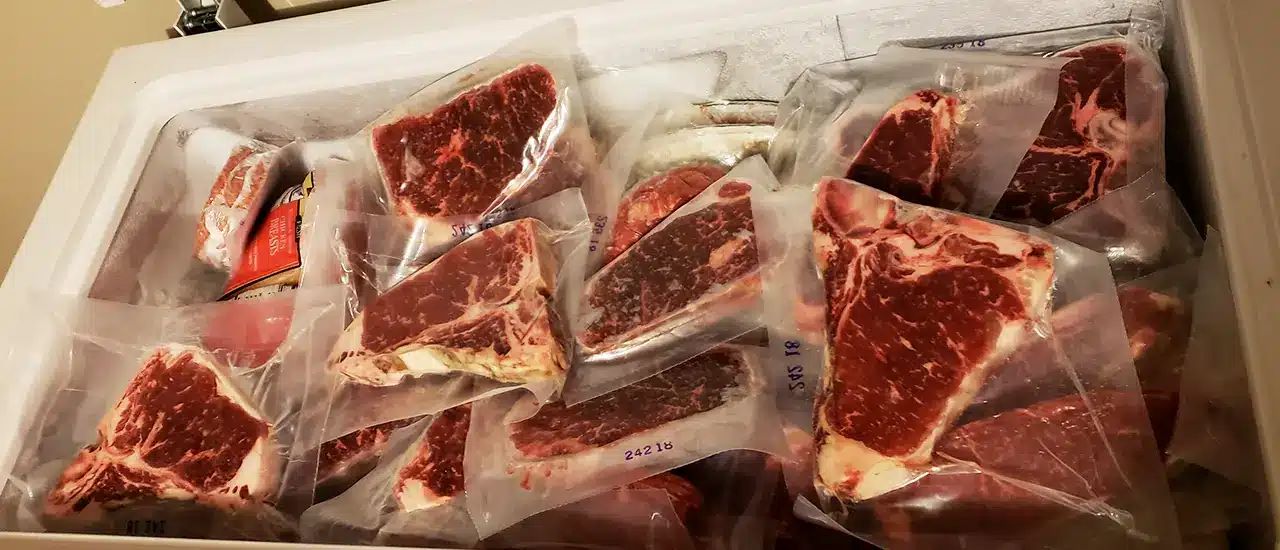
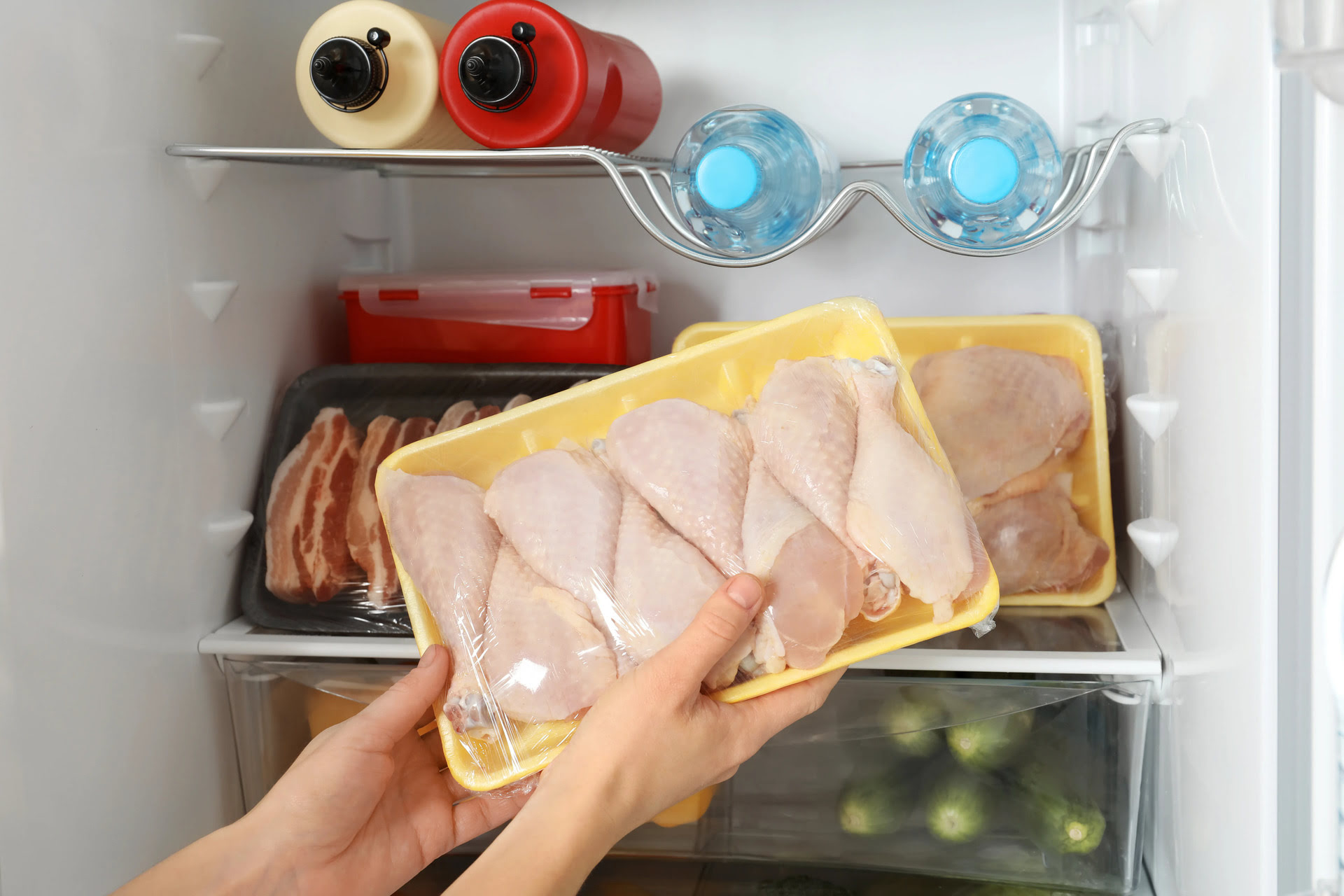
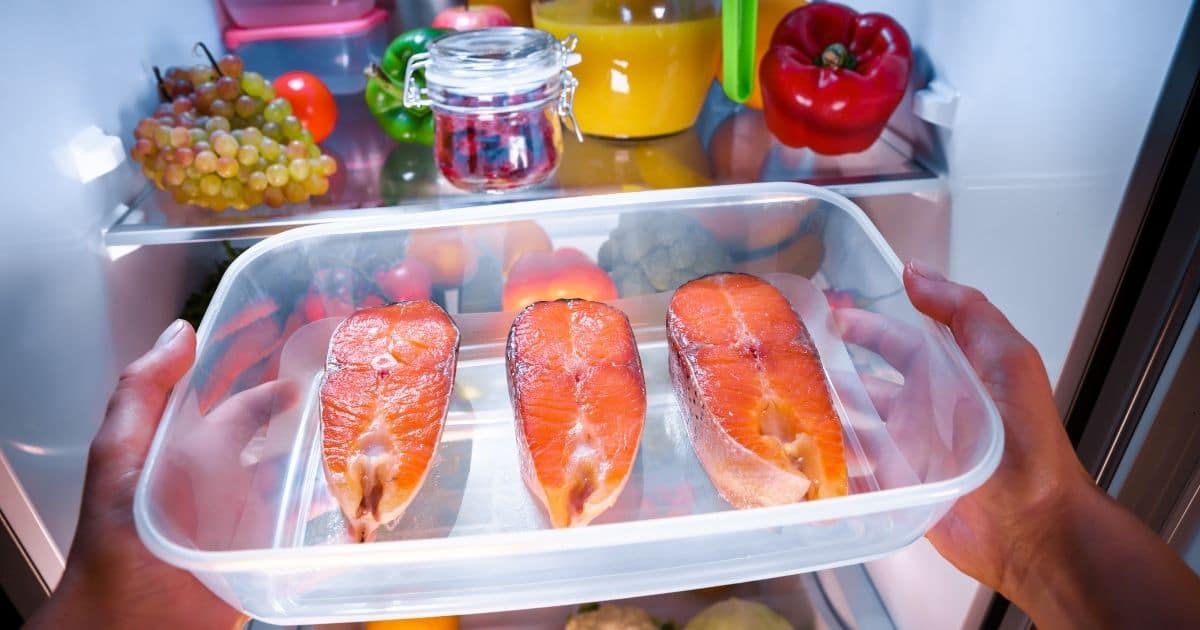
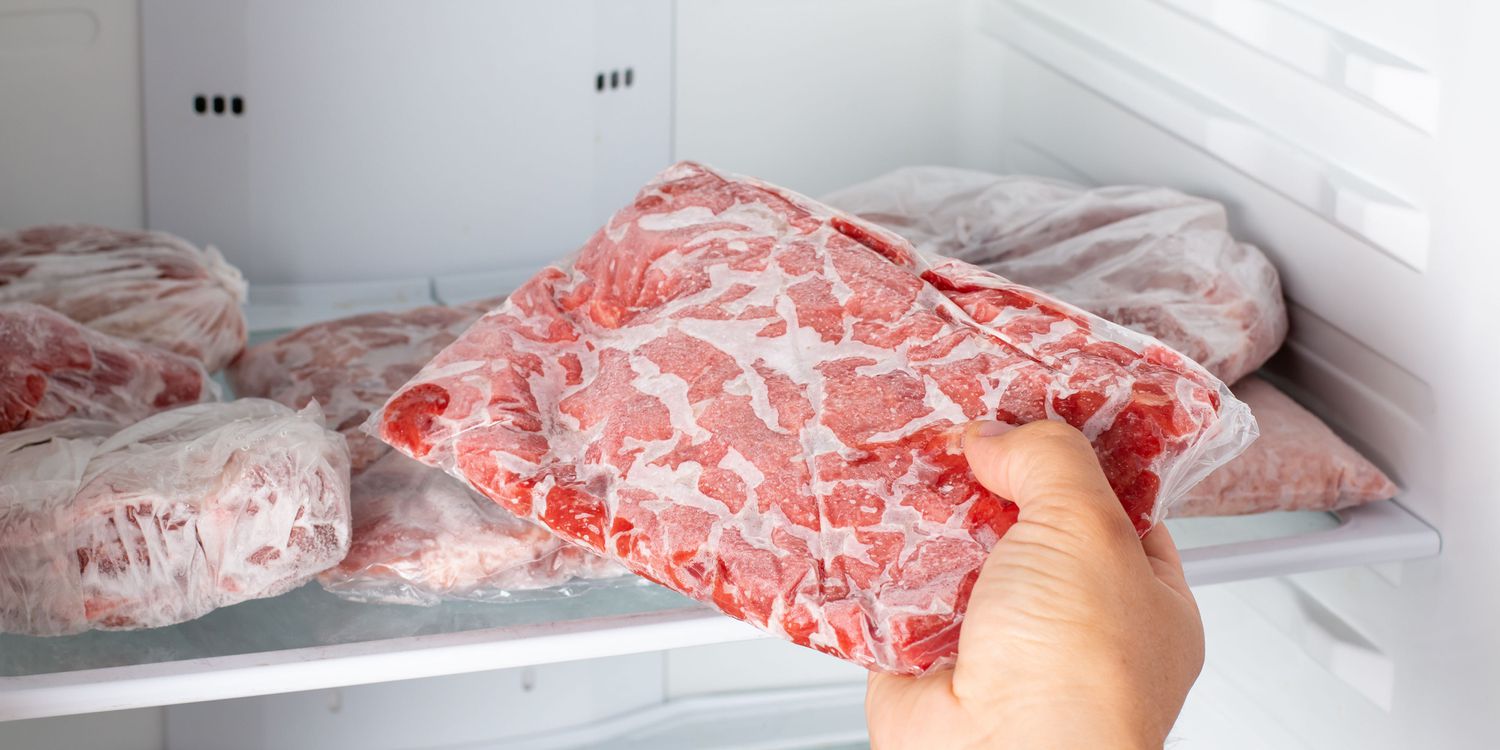
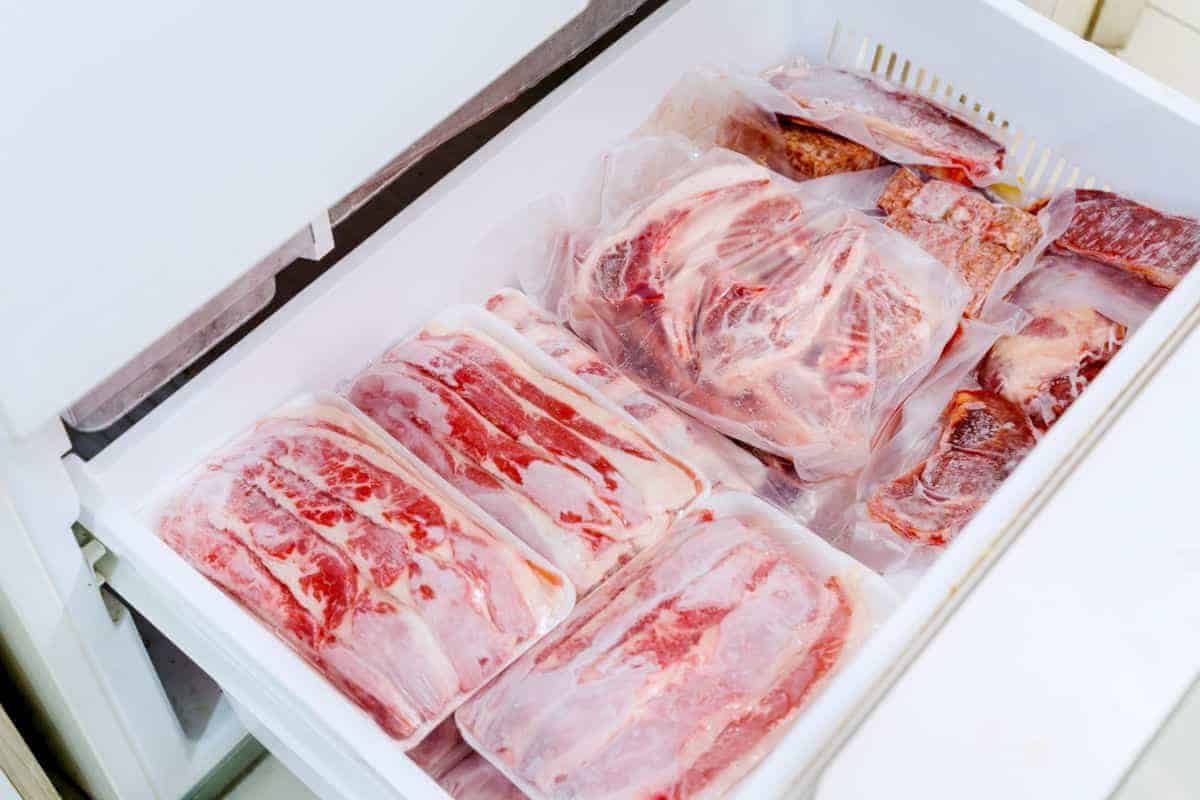
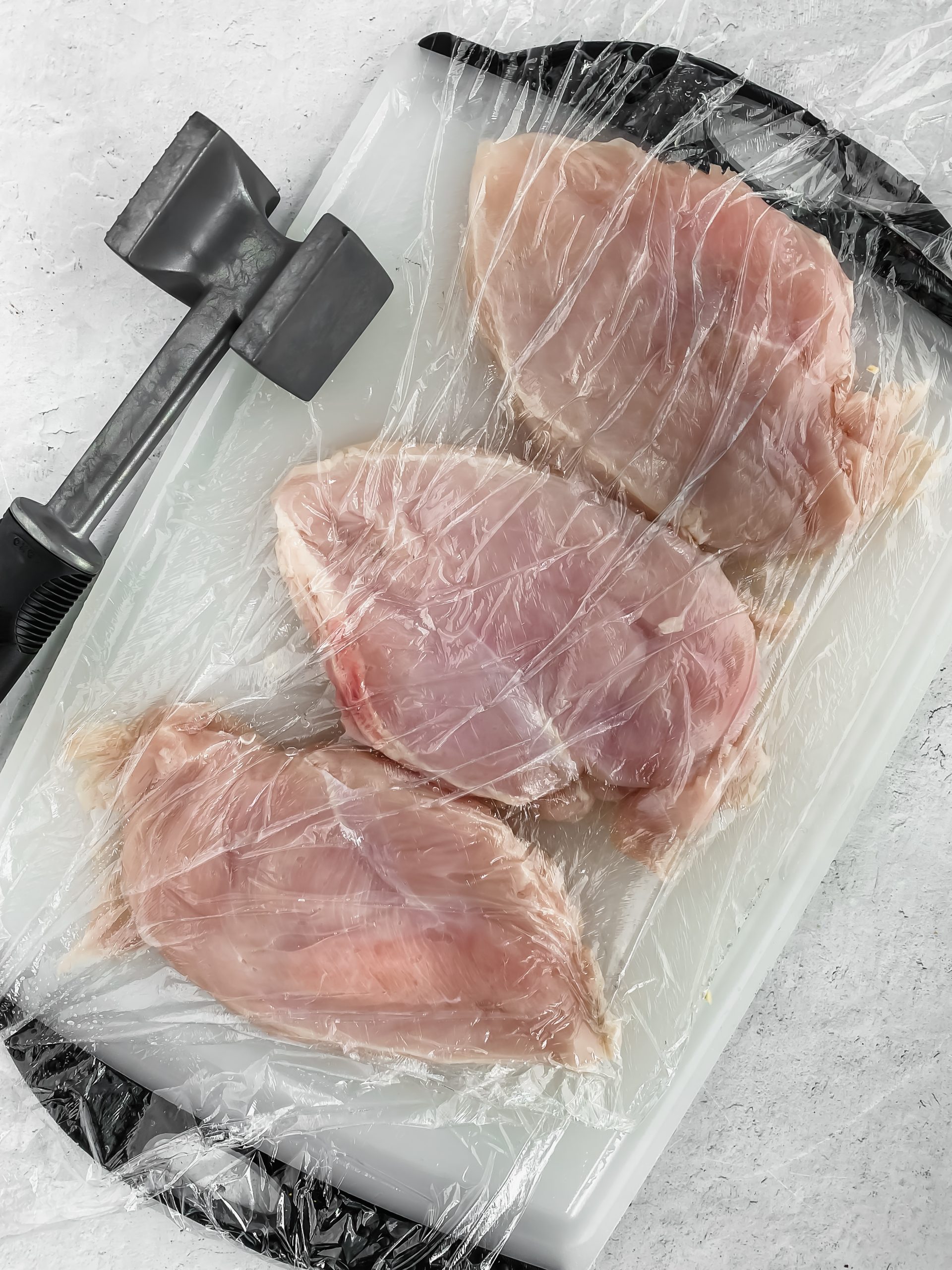


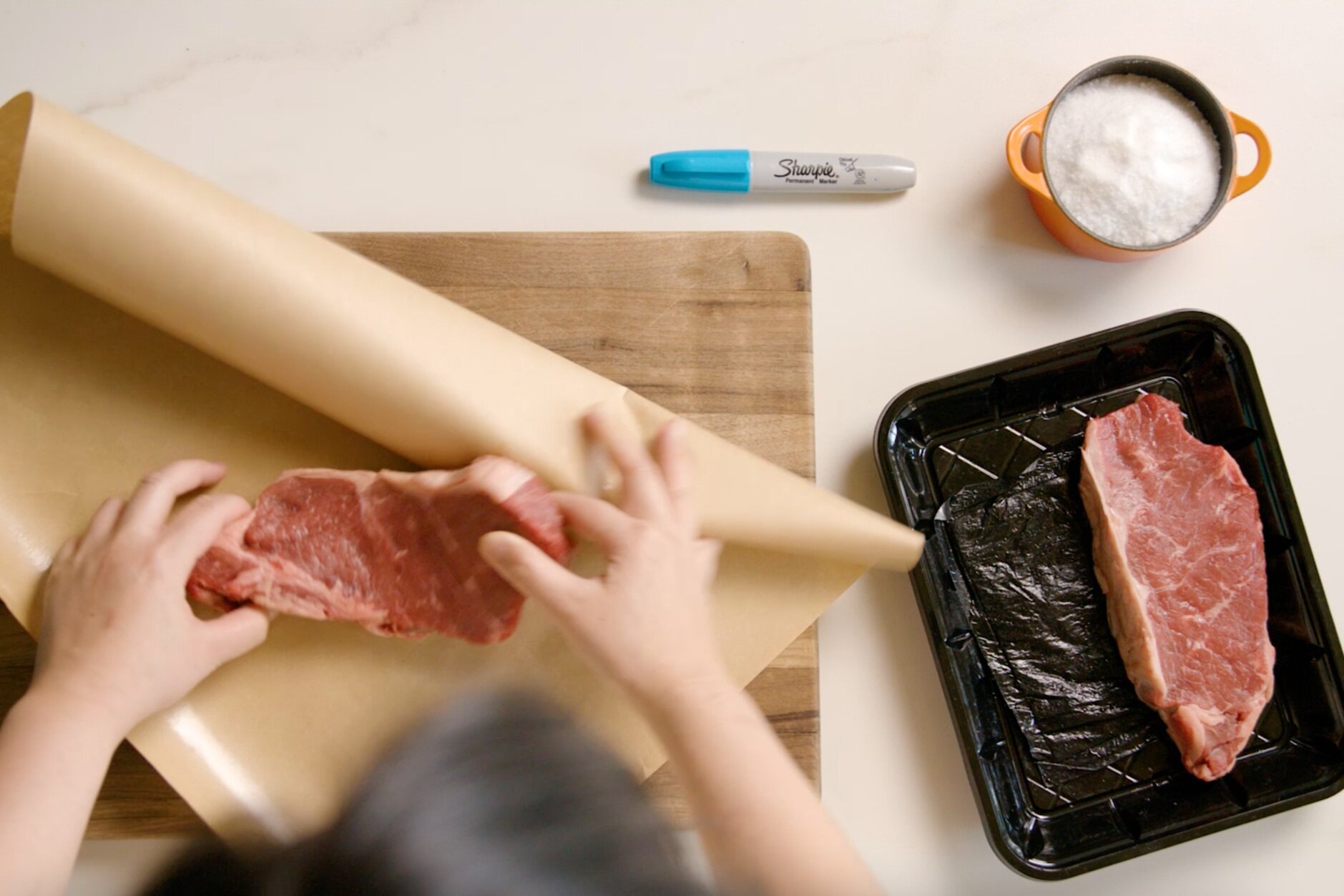
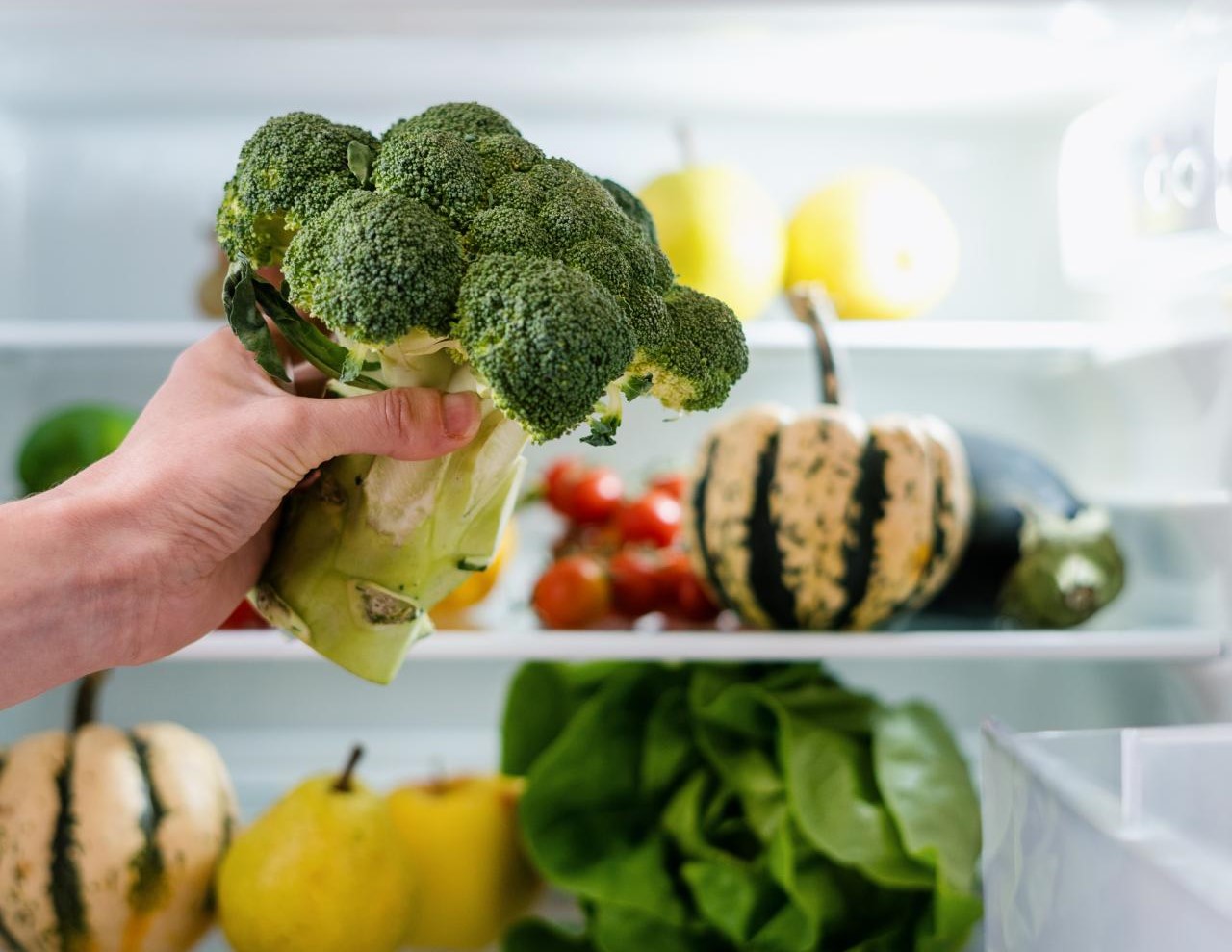
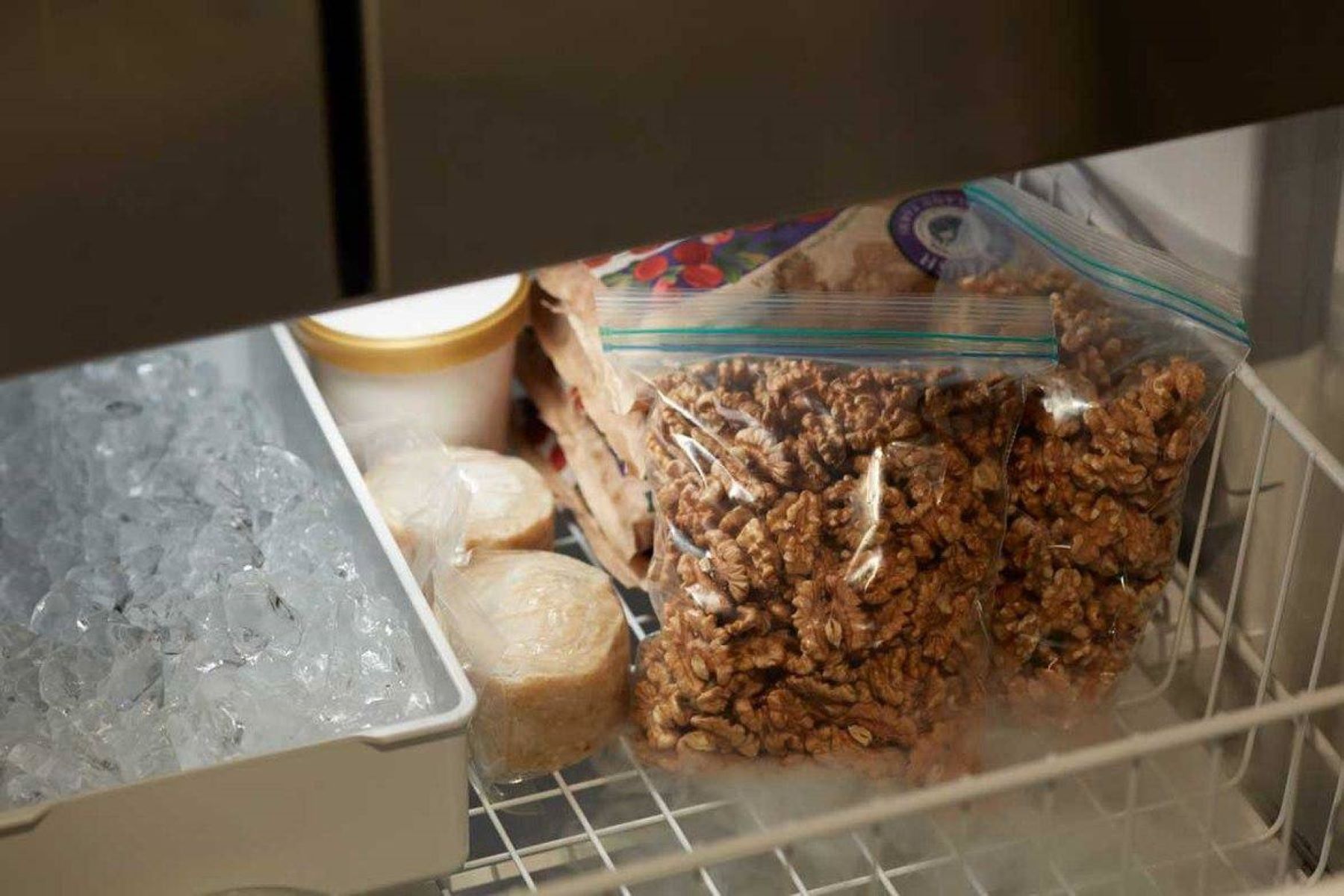


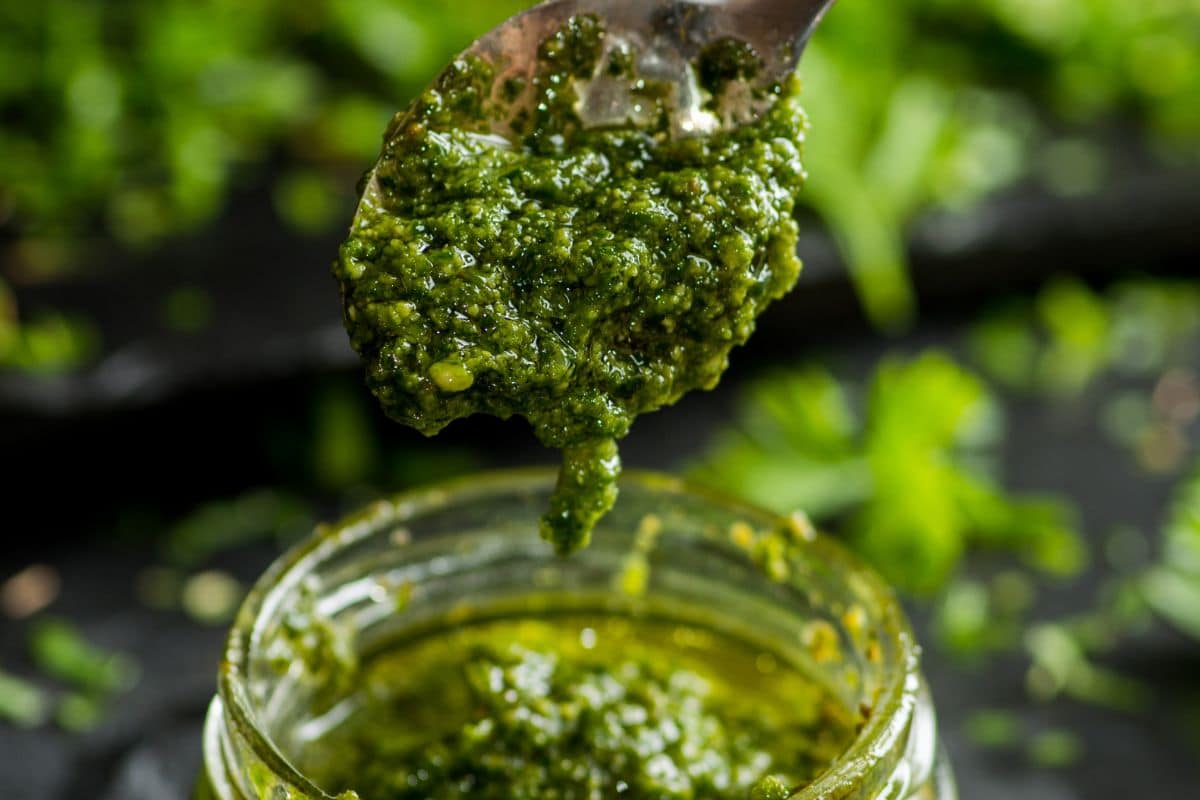

0 thoughts on “How To Store Meat In The Freezer”